Papers by Michael Konstantinov מיכאל קונסטנטינוב
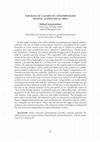
Praxema, 2021
In this study, I analyze the role of clichés in contemporary digital audiovisual arts. The use of... more In this study, I analyze the role of clichés in contemporary digital audiovisual arts. The use of clichés in the author's high art is considered to be a manifestation of a low artistic level. But the same use of clichés in folklore and popular art is not considered to be a "primitive" performance. Clichés in art are defined as a formula. The article presents an approach to formulaic art by John G. Cawelti and Juri Lotman. This approach is the methodology of my study of the role of clichés in the creation of virtual space and hyperreal fictional world. Since clichés play a very important role in contemporary popular culture, I present the data by Lev Manovich, the researcher of digital visual culture. He analyzes the digital component in the digital audiovisual medium. Thus, for the first time, I link Cawelti and Manovich in the analysis of contemporary digital audiovisual art. Speaking about the digital component in art, I should mention that the interface, defined as a formulaic construction, is its important feature. The article states that the cliché in modern digital audiovisual art is one of the main structural elements of a work of art which affects the aesthetic form and content of an audiovisual work. Using clichés, we create virtual and hyperreal worlds that help the addressee to feel escapist feelings and get immersed in these fictional worlds. Also, clichés give us the opportunity to see the new in the already familiar in the perception of art. I define the vision of "new in the already familiar" as defamiliarization by Viktor Shklovsky. The listed properties of the cliché are manifested in all digital contemporary audiovisual arts: cinema, video games, video art, and video installation. The examples are given below in the study. The obtained results are relevant for studying the new types of digital audiovisual arts such as Internet art, interactive cinema, science art, computer art, and others. These arts are now at the stage of their formal, aesthetic and content formation. The obtained results will help to understand the new processes taking place in our postmodern society.

Sign Systems Studies, 2020
Engaging with the methods of studying contemporary digital audiovisual art is a dominant topic in... more Engaging with the methods of studying contemporary digital audiovisual art is a dominant topic in contemporary theories of art. Against this background , the article offers a view onto some aspects of Juri Lotman's and Gilles Deleuze's studies on the cinema. As a rule, contemporary studies of digital audiovisual art take place in the context of interdisciplinary studies. One of the methodological principles of such studies consists in adopting a structural and semiotic approach. As of today, this methodological approach to studying audiovisual art is most developed in semi-otics of the cinema, which is why in this article visual semiotics in general is viewed through semiotics of the cinema (proceeding from the approach of Juri Lotman). Also, the philosophical understanding of the nature of the cinema offered by Gilles Deleuze has proven fundamental for the study of contemporary audiovisual art. The two authors were contemporaries, but represented different scholarly paradigms: while Juri Lotman was an adherent of structuralism, Gilles Deleuze was a poststructuralist who criticized the structuralist approach. Yet despite this principal difference, both scholars still arrived at similar conclusions as concerns several questions regarding the understanding of the cinema and its very nature. In the present paper I focus on the features of these authors' approach to spatial and temporal relations in the cinema, audiovisual relations in film as a heterogeneous form of the work of art, virtuality and mythologism in the viewer's perception of cinema. The differences and similarities in academic approaches to cinema, developed by Lotman and Deleuze, indicate a common direction in the development of the cinema and visual arts theory, which seems relevant for the study of contemporary audiovisual arts.

BULLETIN OF KNUKIM. SERIES IN ARTS, 2019
The purpose of the research is to carry out a comparative analysis of the concepts of semiotics o... more The purpose of the research is to carry out a comparative analysis of the concepts of semiotics of cinema by Roland Barthes and Yurii Lotman in the context of their understanding of the nature of film language, since understanding and methods of studying of contemporary digital audiovisual art are the topic of current interest in contemporary art history. The research methodology. The contemporary study of digital audiovisual art, as a rule, takes place within the context of interdisciplinary work, therefore, one of the methodological principles of such work is structural and semiotic approach. Today, this methodological approach to study the audiovisual art is the most developed in the semiotics of cinema, therefore the visual semiotics is viewed through the semiotics of cinema. The scientific novelty of the research. For the first time a comparative analysis of Yurii Lotman's and Roland Barthes's semiotics of cinema within the framework of the structural and semiotic approach was carried out. The potential of this methodological approach in the study of audiovisual art has been revealed. Conclusions. The article highlights the special aspects of understanding and application of semiotic concepts by the mentioned authors based on the cinematographic material. Thus, Roland Barthes thought that problems in a semiotic study of the cinema occur when a linguistic approach is applied, and Yurii Lotman believed such study to be completely acceptable. This resulted in a different understanding by these scientists of the nature of film language, its minimal meaningful unit, the role of syntagmatics and paradigmatics in the film narration. Different perceptions of the nature of film language and its components are an important basis for the study of contemporary digital audiovisual arts. The main difficulty of semiotics of cinema is the issue of non discrete iconic (analogue) sign in the study of cinema within the framework of the structural and semiotic approach. This problem can be solved based on the legacy of semiotics of cinema of R. Barthes and Yu. Lotman. Another important characteristic of the structural and semiotic approach is its ability to be combined with other methodological approaches in the interdisciplinary study of digital audiovisual art

Bulletin of Kyiv National University of Culture and Arts. Series in Audiovisual Arts and Production, 2019
В данной статье анализируется генезис научного подхода Ю.М. Лотмана к модели коммуникативного акт... more В данной статье анализируется генезис научного подхода Ю.М. Лотмана к модели коммуникативного акта при восприятии произведения искусства. Указываются факторы, повлиявшие на отказ от первоначального взгляда Лотмана на модель коммуникативного акта (семиотической модели коммуникации Р.О. Якобсона) и приход его к полиглотической модели коммуникативного акта. Эти изменения в научном подходе Юрия Лотмана были под влиянием идей М.М. Бахтин: диалогизм и полифонизм в общении. Также в статье были исследованы три коммуникативные функции по Лотману, которые присутствуют в любом художественном тексте. В конце статьи показано применение полиглотической модели Лотмана в кинематографе, на примере «эффекта Кулешова». Таким образом, мы указываем на применимость полиглотической модели Лотмана во всем искусстве.
In this article a genesis of Ju. M. Lotman's scientific approach to the model of communication act at perception of art work was analyzed. There were specified the factors which affected Lotman's deny from the semiotic model of communication act by R. O. Jakobson and his finding on polyglottical model of communication act. These changes in scientific approach of Juri Lotman were influenced by ideas of M. M. Bahtin: dialogism and polyphonism in communication act. Also, three communicative functions according to Lotman, which are present in any artistic text, were investigated in the article. At the end of the article an application of Lotman's polyglottical model in cinematograph was demonstrated on the example of «Kuleshov effect». Thereby, we point at applicability of Lotman's polyglottical model all over the art.
Philosophy and political science in the context of modern, 2016
В статье рассматриваются основные источники формирования
структурно-семиотического подхода выдаю... more В статье рассматриваются основные источники формирования
структурно-семиотического подхода выдающегося советского
культуролога Ю. М. Лотмана. В частности, рассматривается влияние
Ленинградской литературоведческой школы, гегелевско-марксистской
диалектики, естественных и точных наук, основателей семиотики, а
также учения о биосфере В. И. Вернадского.
In article the main sources of formation of structural and semiotics
approach of the outstanding Soviet culturologist Yu. M. Lotman are considered. In
particular, influence of the Leningrad literary school, Hegel and Marx dialectics,
natural and exact sciences, founders of semiotics, and also theory of the biosphere
of V. I. Vernadsky is considered.

Збірник наукових праць «Гілея: науковий вісник», 2017
Проведен компаративный анализ концепций семиотики кино Юрия
Лотмана, Кристиана Метца и Ролана Ба... more Проведен компаративный анализ концепций семиотики кино Юрия
Лотмана, Кристиана Метца и Ролана Барта в контексте понимания ними
природы киноязыка. Показано, что если Лотман определяет фильм как
кинотекст, построенный по правилам киноязыка–кода, то Метц не находит
в фильме киноязык как лингвистическое понятие, которое характерно всем
естественным языкам; в свою очередь, Барт разрабатывал коннотативную
семиотику – систему вторичных смыслов, и считал, что фильм нельзя сводит к
чистой грамматике знаков, то есть к семиотическим образованиям. Делается
вывод об определенном сходстве семиотики кино Барта и Метца и их отличии
от Лотмана.
Three conceptions of the cinema semiotics: Yu. Lotman, Ch. Metz, R. Barthes.
The purpose of the present study is the comparative analysis of Yuri Lotman, Christian Metz and Roland Barthes conceptions of the Cinema Semiotics in the context of their understanding the nature of cinema language. It is shown that if Lotman determines a film as cinema text built on the rules of cinema language as a code, then Metz does not find in a film a cinema language as linguistic concept that is characteristic to all human languages. In turn, Barthes developed a connotative semiotics – system of secondary senses, and considered that film it is impossible takes to clean grammar of signs, or to semiotic units. The conclusion is drawn on certain likeness of Barthes’ and Metz’ cinema semiotics and their difference from Lotman.

Philosophy and political science in the context of modern, 2016
Аннотация. Проведен анализ структурно-семиотического метода Юрия Лотмана, понимания и применения ... more Аннотация. Проведен анализ структурно-семиотического метода Юрия Лотмана, понимания и применения им понятия «структура». Показано отличие принципа структурности у Ю. Лотмана от понимания структуры французскими структуралистами, в частности – от понятия «корпус» у Ролана Барта.
The concept of “structure”: Yuri Lotman & Roland Barthes.
Abstract. The author analyses structural-semiotic method of Yuri Lotman, understanding and applying them to the concept of «structure». It is shown in contrast to the principles of structural Lotman by understanding the structure of the French structuralists, in particular – from the concept of «the corpus» of Roland Barthes. Initial understanding of the structure in Lotman’s concept is much harder taken by Roland Barthes and the French structuralists of linguistic concepts. It is safe to talk about Lotman drawn to the researcher removal from the scope of the structure, transfer him to a third-party observers. He was not interested in the interpretation of the observer, it is important the very possibility of scientific monitoring of the establishment and functioning of the structure, revealing its important elements and relationships under observation. At the same time the very essence of the existential observer, according to Lotman, practically not necessary. After identifying the structures and symbols of its backbone elements and principles, the observer has no room for his feelings and thoughts. It is important for the methodology of Lotman: independent reality of the structure and text.

Збірник наукових праць «Гілея: науковий вісник», 2016
Реконструирована история возникновения понятия «вторичная
моделирующая система», проанализировано... more Реконструирована история возникновения понятия «вторичная
моделирующая система», проанализировано отношение Ю.Лотмана к предшествующему ему структурализму в контексте формирования и развития этого понятия, раскрыто содержание и значение, а также эволюция понятия «вторичная моделирующая система»у Ю.Лотмана.В этом контексте определено значение и содержание понятий «язык», «текст», «модель», которые играли структурообразующую роль в семиотике Ю.Лотмана.
The purpose of the present study is to reconstruct the history of emergence of the concept of secondary modelling system. The author analyses Yuri Lotman’s relation to the preceding structuralism with respect to the generation and development of the concept of secondary modelling system, defining its contents and meaning, tracing the evolution of the concept. In order to do this, the author defines the meaning and contents of notions: «language», «text», «model», which played a role of structure–forming elements in Yuri Lotman’s semiotics.

Philosophy and political science in the context of modern, 2016
Рассматривается структурно-семиотический анализ Юрием Лотманом ряда визуальных искусств – таких, ... more Рассматривается структурно-семиотический анализ Юрием Лотманом ряда визуальных искусств – таких, как интерьер, архитектура, театр, кино и др. Показано, что работы Ю. Лотмана можно рассматривать как серьёзный вклад в визуальную семиотику второй половины ХХ века. Особое внимание уделено сравнению между театральным искусством и кинематографом в контексте семиотического анализа их диалогической структуры.
Konstantinov M., Yuri Lotman’s structural-semiotic approach to visual arts.
Abstract. The paper purposes to explicate the basic features of Yuri Lotman’s structural-semioti approach to visual arts, using examples from different areas – architecture, interior design, theatre, cinema, and others. Yuri Lotman pays special attention to comparing theatre and film in the context of semiotic analysis of their dialogical structure. The author states that we should consider the works of Yuri Lotman to be a great contribution to the visual semiotics of the second half of the
twentieth century.
Key words: architecture, art, cinema, film, interior, movie, performing arts, still life, theatre, visual semiotics, Yuri Lotman.

Збірник наукових праць «Гілея: науковий вісник», 2016
Реконструирована эволюция концепции Ю. Лотмана об искусстве как
«вторичной моделирующей системе»... more Реконструирована эволюция концепции Ю. Лотмана об искусстве как
«вторичной моделирующей системе» – показан переход к понятиям «первичное» и «вторичное» в коммуникативно–моделирующих системах, а затем к понятиям континуальности и дискретности, в которых континуальные языки принимают на себя функцию термина «вторичные моделирующие системы». Сделан вывод о существенной трансформации не только понятий, но и всей
концепции Ю. Лотмана, развивающей идею «семиосферы» как глобальной моделирующей семиотической системы.
The transformation of Yuri Lotman’s concept of art as «the
modelling system».
The purpose of the present study is to reconstruct the evolution of the concept
of Yu. Lotman about art as secondary modelling system. The author analyses the
transition to the concepts «primary» and «secondary» of the communicative modeling
systems, and then to concepts of a continualization and discretization in which
continual languages assume function of the term «secondary modeling systems». The
conclusion is drawn on essential transformation not only concepts, but also all theory
of Yu. Lotman developing idea «semiosphere» as the global modelling semiotics
system.
EUROPEAN PHILOSOPHICAL AND HISTORICAL DISCOURSE, 2017
In this article a genesis of Ju. M. Lotman's scientific approach to the model of communication ac... more In this article a genesis of Ju. M. Lotman's scientific approach to the model of communication act at perception of art work was analyzed. There were specified the factors which affected Lotman's deny from the semiotic model of communication act by R. O. Jakobson and his finding on polyglottical model of communication act. These changes in scientific approach of Juri Lotman were influenced by ideas of M. M. Bahtin: dialogism and polyphonism in communication act. Also, three communicative functions according to Lotman, which are present in any artistic text, were investigated in the article. At the end of the article an application of Lotman's polyglottical model in cinematograph was demonstrated on the example of «Kuleshov effect». Thereby, we point at applicability of Lotman's polyglottical model all over the art.
Thesis Chapters by Michael Konstantinov מיכאל קונסטנטינוב
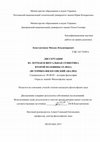
Ю. ЛОТМАН И ВИЗУАЛЬНАЯ СЕМИОТИКА ВТОРОЙ ПОЛОВИНЫ ХХ В. (ИСТОРИКО-ФИЛОСОФСКИЙ АНАЛИЗ) - кандидатская диссертация, 2017
Министерство образования и науки Украины Полтавский национальный технический университет имени Юр... more Министерство образования и науки Украины Полтавский национальный технический университет имени Юрия Кондратюка Министерство образования и науки Украины Днепровский национальный университет имени Олеся Гончара Квалификационная научная работа на правах рукописи Константинов Михаил Владимирович УДК 165.75(091) ДИССЕРТАЦИЯ Ю. ЛОТМАН И ВИЗУАЛЬНАЯ СЕМИОТИКА ВТОРОЙ ПОЛОВИНЫ ХХ ВЕКА (ИСТОРИКО-ФИЛОСОФСКИЙ АНАЛИЗ) Специальность: 09.00.05-история философии Отрасль знаний: Философские науки Подается на соискание ученой степени кандидата философских наук Диссертация содержит результаты собственных исследований. Использование идей, результатов и текстов других авторов имеют ссылки на соответствующие источники __________________ (М.В.Константинов) Научный руководитель Аляев Геннадий Евгеньевич, профессор, доктор философских наук ПОЛТАВА 2017
УДК 165.75(091) Ю. ЛОТМАН И ВИЗУАЛЬНАЯ СЕМИОТИКА ВТОРОЙ ПОЛОВИНЫ ХХ В. (ИСТОРИКО-ФИЛОСОФСКИЙ АНАЛ... more УДК 165.75(091) Ю. ЛОТМАН И ВИЗУАЛЬНАЯ СЕМИОТИКА ВТОРОЙ ПОЛОВИНЫ ХХ В. (ИСТОРИКО-ФИЛОСОФСКИЙ АНАЛИЗ) Специальность 09.00.05 -история философии АВТОРЕФЕРАТ диссертации на соискание ученой степени кандидата философских наук Днепр -2017
Books by Michael Konstantinov מיכאל קונסטנטינוב
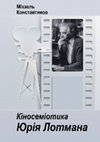
КІНОСЕМІОТИКА ЮРІЯ ЛОТМАНА // The National Academy of Sciences of Ukraine. Rylsky Institute of Art Studies, Folklore and Ethnology. , 2019
Ця монографія є першим глибоким дослідженням наукової спадщини Ю.М. Лотмана (1922–1993), що аналі... more Ця монографія є першим глибоким дослідженням наукової спадщини Ю.М. Лотмана (1922–1993), що аналізує його структурно-семіотичний підхід до кінематографа та інших візуальних мистецтв. Ретельно й детально досліджено специфіку цього підходу до кінематографа, виявлено риси й особливості кіно та аудіовізуального медіума. Також здійснено компаративний аналіз Лотманового підходу та семіотичних підходів до кіномистецтва в Ролана Барта й засновника світової кіносеміотики Крістіана Метца. Крім того, ідеї тартуського вченого розглянуто в контексті філософії кіно Жиля Дельоза.
Упродовж усієї монографії ідеї Ю.М. Лотмана порівняно з пізнішими підходами до вивчення аудіовізуального мистецтва (приміром, із підходами в Жиля Дельоза, Льва Мановича та інших). У такий спосіб акцентовано актуальність Лотманових ідей для дослідження сучасних форм цифрових аудіовізуальних мистецтв і впливу аудіовізуального медіума (ЗМІ, реклама, соціальні мережі в Інтернеті) на людську діяльність.
This monograph is the first in-depth study of scientific heritage of Ju. M. Lotman (1922-1993) that analyzes its structurally semiotics approach to cinema and other visual arts. Carefully it is also in details investigated specifics of this approach to cinema, it is revealed lines and features of cinema and audiovisual to the medium. A comparative analysis of Lotman's approach and semiotic approaches to cinema by Roland Barthes and the founder of world cinema semiotics Christian Metz was also carried out. In addition, the ideas of the Tartu scientist were considered in the context of the philosophy of Gilles Deleuze cinema.
Throughout the monograph of the idea of Ju. M. Lotman compared with later approaches to the study of audiovisual art (for example, with the approaches of Gilles Deleuze, Lev Manovich and others). In this way, the relevance of Lotman's ideas for the study of contemporary forms of digital audio-visual arts and the impact of the audiovisual medium (mass media, advertising, social networks on the Internet) on human activity is emphasized.
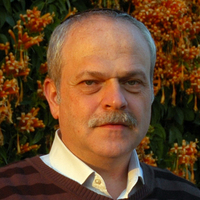

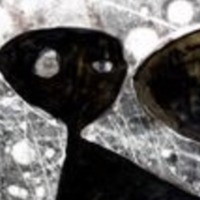




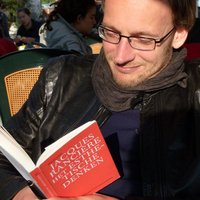
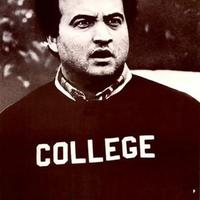
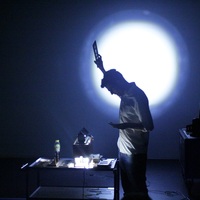
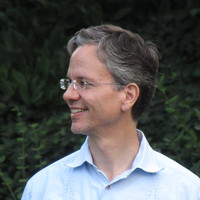
Uploads
Papers by Michael Konstantinov מיכאל קונסטנטינוב
In this article a genesis of Ju. M. Lotman's scientific approach to the model of communication act at perception of art work was analyzed. There were specified the factors which affected Lotman's deny from the semiotic model of communication act by R. O. Jakobson and his finding on polyglottical model of communication act. These changes in scientific approach of Juri Lotman were influenced by ideas of M. M. Bahtin: dialogism and polyphonism in communication act. Also, three communicative functions according to Lotman, which are present in any artistic text, were investigated in the article. At the end of the article an application of Lotman's polyglottical model in cinematograph was demonstrated on the example of «Kuleshov effect». Thereby, we point at applicability of Lotman's polyglottical model all over the art.
структурно-семиотического подхода выдающегося советского
культуролога Ю. М. Лотмана. В частности, рассматривается влияние
Ленинградской литературоведческой школы, гегелевско-марксистской
диалектики, естественных и точных наук, основателей семиотики, а
также учения о биосфере В. И. Вернадского.
In article the main sources of formation of structural and semiotics
approach of the outstanding Soviet culturologist Yu. M. Lotman are considered. In
particular, influence of the Leningrad literary school, Hegel and Marx dialectics,
natural and exact sciences, founders of semiotics, and also theory of the biosphere
of V. I. Vernadsky is considered.
Лотмана, Кристиана Метца и Ролана Барта в контексте понимания ними
природы киноязыка. Показано, что если Лотман определяет фильм как
кинотекст, построенный по правилам киноязыка–кода, то Метц не находит
в фильме киноязык как лингвистическое понятие, которое характерно всем
естественным языкам; в свою очередь, Барт разрабатывал коннотативную
семиотику – систему вторичных смыслов, и считал, что фильм нельзя сводит к
чистой грамматике знаков, то есть к семиотическим образованиям. Делается
вывод об определенном сходстве семиотики кино Барта и Метца и их отличии
от Лотмана.
Three conceptions of the cinema semiotics: Yu. Lotman, Ch. Metz, R. Barthes.
The purpose of the present study is the comparative analysis of Yuri Lotman, Christian Metz and Roland Barthes conceptions of the Cinema Semiotics in the context of their understanding the nature of cinema language. It is shown that if Lotman determines a film as cinema text built on the rules of cinema language as a code, then Metz does not find in a film a cinema language as linguistic concept that is characteristic to all human languages. In turn, Barthes developed a connotative semiotics – system of secondary senses, and considered that film it is impossible takes to clean grammar of signs, or to semiotic units. The conclusion is drawn on certain likeness of Barthes’ and Metz’ cinema semiotics and their difference from Lotman.
The concept of “structure”: Yuri Lotman & Roland Barthes.
Abstract. The author analyses structural-semiotic method of Yuri Lotman, understanding and applying them to the concept of «structure». It is shown in contrast to the principles of structural Lotman by understanding the structure of the French structuralists, in particular – from the concept of «the corpus» of Roland Barthes. Initial understanding of the structure in Lotman’s concept is much harder taken by Roland Barthes and the French structuralists of linguistic concepts. It is safe to talk about Lotman drawn to the researcher removal from the scope of the structure, transfer him to a third-party observers. He was not interested in the interpretation of the observer, it is important the very possibility of scientific monitoring of the establishment and functioning of the structure, revealing its important elements and relationships under observation. At the same time the very essence of the existential observer, according to Lotman, practically not necessary. After identifying the structures and symbols of its backbone elements and principles, the observer has no room for his feelings and thoughts. It is important for the methodology of Lotman: independent reality of the structure and text.
моделирующая система», проанализировано отношение Ю.Лотмана к предшествующему ему структурализму в контексте формирования и развития этого понятия, раскрыто содержание и значение, а также эволюция понятия «вторичная моделирующая система»у Ю.Лотмана.В этом контексте определено значение и содержание понятий «язык», «текст», «модель», которые играли структурообразующую роль в семиотике Ю.Лотмана.
The purpose of the present study is to reconstruct the history of emergence of the concept of secondary modelling system. The author analyses Yuri Lotman’s relation to the preceding structuralism with respect to the generation and development of the concept of secondary modelling system, defining its contents and meaning, tracing the evolution of the concept. In order to do this, the author defines the meaning and contents of notions: «language», «text», «model», which played a role of structure–forming elements in Yuri Lotman’s semiotics.
Konstantinov M., Yuri Lotman’s structural-semiotic approach to visual arts.
Abstract. The paper purposes to explicate the basic features of Yuri Lotman’s structural-semioti approach to visual arts, using examples from different areas – architecture, interior design, theatre, cinema, and others. Yuri Lotman pays special attention to comparing theatre and film in the context of semiotic analysis of their dialogical structure. The author states that we should consider the works of Yuri Lotman to be a great contribution to the visual semiotics of the second half of the
twentieth century.
Key words: architecture, art, cinema, film, interior, movie, performing arts, still life, theatre, visual semiotics, Yuri Lotman.
«вторичной моделирующей системе» – показан переход к понятиям «первичное» и «вторичное» в коммуникативно–моделирующих системах, а затем к понятиям континуальности и дискретности, в которых континуальные языки принимают на себя функцию термина «вторичные моделирующие системы». Сделан вывод о существенной трансформации не только понятий, но и всей
концепции Ю. Лотмана, развивающей идею «семиосферы» как глобальной моделирующей семиотической системы.
The transformation of Yuri Lotman’s concept of art as «the
modelling system».
The purpose of the present study is to reconstruct the evolution of the concept
of Yu. Lotman about art as secondary modelling system. The author analyses the
transition to the concepts «primary» and «secondary» of the communicative modeling
systems, and then to concepts of a continualization and discretization in which
continual languages assume function of the term «secondary modeling systems». The
conclusion is drawn on essential transformation not only concepts, but also all theory
of Yu. Lotman developing idea «semiosphere» as the global modelling semiotics
system.
Thesis Chapters by Michael Konstantinov מיכאל קונסטנטינוב
Books by Michael Konstantinov מיכאל קונסטנטינוב
Упродовж усієї монографії ідеї Ю.М. Лотмана порівняно з пізнішими підходами до вивчення аудіовізуального мистецтва (приміром, із підходами в Жиля Дельоза, Льва Мановича та інших). У такий спосіб акцентовано актуальність Лотманових ідей для дослідження сучасних форм цифрових аудіовізуальних мистецтв і впливу аудіовізуального медіума (ЗМІ, реклама, соціальні мережі в Інтернеті) на людську діяльність.
This monograph is the first in-depth study of scientific heritage of Ju. M. Lotman (1922-1993) that analyzes its structurally semiotics approach to cinema and other visual arts. Carefully it is also in details investigated specifics of this approach to cinema, it is revealed lines and features of cinema and audiovisual to the medium. A comparative analysis of Lotman's approach and semiotic approaches to cinema by Roland Barthes and the founder of world cinema semiotics Christian Metz was also carried out. In addition, the ideas of the Tartu scientist were considered in the context of the philosophy of Gilles Deleuze cinema.
Throughout the monograph of the idea of Ju. M. Lotman compared with later approaches to the study of audiovisual art (for example, with the approaches of Gilles Deleuze, Lev Manovich and others). In this way, the relevance of Lotman's ideas for the study of contemporary forms of digital audio-visual arts and the impact of the audiovisual medium (mass media, advertising, social networks on the Internet) on human activity is emphasized.
In this article a genesis of Ju. M. Lotman's scientific approach to the model of communication act at perception of art work was analyzed. There were specified the factors which affected Lotman's deny from the semiotic model of communication act by R. O. Jakobson and his finding on polyglottical model of communication act. These changes in scientific approach of Juri Lotman were influenced by ideas of M. M. Bahtin: dialogism and polyphonism in communication act. Also, three communicative functions according to Lotman, which are present in any artistic text, were investigated in the article. At the end of the article an application of Lotman's polyglottical model in cinematograph was demonstrated on the example of «Kuleshov effect». Thereby, we point at applicability of Lotman's polyglottical model all over the art.
структурно-семиотического подхода выдающегося советского
культуролога Ю. М. Лотмана. В частности, рассматривается влияние
Ленинградской литературоведческой школы, гегелевско-марксистской
диалектики, естественных и точных наук, основателей семиотики, а
также учения о биосфере В. И. Вернадского.
In article the main sources of formation of structural and semiotics
approach of the outstanding Soviet culturologist Yu. M. Lotman are considered. In
particular, influence of the Leningrad literary school, Hegel and Marx dialectics,
natural and exact sciences, founders of semiotics, and also theory of the biosphere
of V. I. Vernadsky is considered.
Лотмана, Кристиана Метца и Ролана Барта в контексте понимания ними
природы киноязыка. Показано, что если Лотман определяет фильм как
кинотекст, построенный по правилам киноязыка–кода, то Метц не находит
в фильме киноязык как лингвистическое понятие, которое характерно всем
естественным языкам; в свою очередь, Барт разрабатывал коннотативную
семиотику – систему вторичных смыслов, и считал, что фильм нельзя сводит к
чистой грамматике знаков, то есть к семиотическим образованиям. Делается
вывод об определенном сходстве семиотики кино Барта и Метца и их отличии
от Лотмана.
Three conceptions of the cinema semiotics: Yu. Lotman, Ch. Metz, R. Barthes.
The purpose of the present study is the comparative analysis of Yuri Lotman, Christian Metz and Roland Barthes conceptions of the Cinema Semiotics in the context of their understanding the nature of cinema language. It is shown that if Lotman determines a film as cinema text built on the rules of cinema language as a code, then Metz does not find in a film a cinema language as linguistic concept that is characteristic to all human languages. In turn, Barthes developed a connotative semiotics – system of secondary senses, and considered that film it is impossible takes to clean grammar of signs, or to semiotic units. The conclusion is drawn on certain likeness of Barthes’ and Metz’ cinema semiotics and their difference from Lotman.
The concept of “structure”: Yuri Lotman & Roland Barthes.
Abstract. The author analyses structural-semiotic method of Yuri Lotman, understanding and applying them to the concept of «structure». It is shown in contrast to the principles of structural Lotman by understanding the structure of the French structuralists, in particular – from the concept of «the corpus» of Roland Barthes. Initial understanding of the structure in Lotman’s concept is much harder taken by Roland Barthes and the French structuralists of linguistic concepts. It is safe to talk about Lotman drawn to the researcher removal from the scope of the structure, transfer him to a third-party observers. He was not interested in the interpretation of the observer, it is important the very possibility of scientific monitoring of the establishment and functioning of the structure, revealing its important elements and relationships under observation. At the same time the very essence of the existential observer, according to Lotman, practically not necessary. After identifying the structures and symbols of its backbone elements and principles, the observer has no room for his feelings and thoughts. It is important for the methodology of Lotman: independent reality of the structure and text.
моделирующая система», проанализировано отношение Ю.Лотмана к предшествующему ему структурализму в контексте формирования и развития этого понятия, раскрыто содержание и значение, а также эволюция понятия «вторичная моделирующая система»у Ю.Лотмана.В этом контексте определено значение и содержание понятий «язык», «текст», «модель», которые играли структурообразующую роль в семиотике Ю.Лотмана.
The purpose of the present study is to reconstruct the history of emergence of the concept of secondary modelling system. The author analyses Yuri Lotman’s relation to the preceding structuralism with respect to the generation and development of the concept of secondary modelling system, defining its contents and meaning, tracing the evolution of the concept. In order to do this, the author defines the meaning and contents of notions: «language», «text», «model», which played a role of structure–forming elements in Yuri Lotman’s semiotics.
Konstantinov M., Yuri Lotman’s structural-semiotic approach to visual arts.
Abstract. The paper purposes to explicate the basic features of Yuri Lotman’s structural-semioti approach to visual arts, using examples from different areas – architecture, interior design, theatre, cinema, and others. Yuri Lotman pays special attention to comparing theatre and film in the context of semiotic analysis of their dialogical structure. The author states that we should consider the works of Yuri Lotman to be a great contribution to the visual semiotics of the second half of the
twentieth century.
Key words: architecture, art, cinema, film, interior, movie, performing arts, still life, theatre, visual semiotics, Yuri Lotman.
«вторичной моделирующей системе» – показан переход к понятиям «первичное» и «вторичное» в коммуникативно–моделирующих системах, а затем к понятиям континуальности и дискретности, в которых континуальные языки принимают на себя функцию термина «вторичные моделирующие системы». Сделан вывод о существенной трансформации не только понятий, но и всей
концепции Ю. Лотмана, развивающей идею «семиосферы» как глобальной моделирующей семиотической системы.
The transformation of Yuri Lotman’s concept of art as «the
modelling system».
The purpose of the present study is to reconstruct the evolution of the concept
of Yu. Lotman about art as secondary modelling system. The author analyses the
transition to the concepts «primary» and «secondary» of the communicative modeling
systems, and then to concepts of a continualization and discretization in which
continual languages assume function of the term «secondary modeling systems». The
conclusion is drawn on essential transformation not only concepts, but also all theory
of Yu. Lotman developing idea «semiosphere» as the global modelling semiotics
system.
Упродовж усієї монографії ідеї Ю.М. Лотмана порівняно з пізнішими підходами до вивчення аудіовізуального мистецтва (приміром, із підходами в Жиля Дельоза, Льва Мановича та інших). У такий спосіб акцентовано актуальність Лотманових ідей для дослідження сучасних форм цифрових аудіовізуальних мистецтв і впливу аудіовізуального медіума (ЗМІ, реклама, соціальні мережі в Інтернеті) на людську діяльність.
This monograph is the first in-depth study of scientific heritage of Ju. M. Lotman (1922-1993) that analyzes its structurally semiotics approach to cinema and other visual arts. Carefully it is also in details investigated specifics of this approach to cinema, it is revealed lines and features of cinema and audiovisual to the medium. A comparative analysis of Lotman's approach and semiotic approaches to cinema by Roland Barthes and the founder of world cinema semiotics Christian Metz was also carried out. In addition, the ideas of the Tartu scientist were considered in the context of the philosophy of Gilles Deleuze cinema.
Throughout the monograph of the idea of Ju. M. Lotman compared with later approaches to the study of audiovisual art (for example, with the approaches of Gilles Deleuze, Lev Manovich and others). In this way, the relevance of Lotman's ideas for the study of contemporary forms of digital audio-visual arts and the impact of the audiovisual medium (mass media, advertising, social networks on the Internet) on human activity is emphasized.